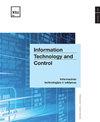Adaptive clustering object detection method for UAV images under long-tailed distributions
IF 2
4区 计算机科学
Q3 AUTOMATION & CONTROL SYSTEMS
引用次数: 0
Abstract
UAV images are characterized by small targets, difficult to identify in the background image, clustering and sparse distribution of targets, etc. Many researchers have proposed the clustering target detection method (ClusDet) for UAV images. However, due to the large differences in target scales and uneven distribution of targets in UAV images, showing long-tailed distribution, the traditional ClusDet algorithm tends to truncate large and medium targets in the process of clustering; in the detection process, the fixed-threshold NMS method in the ClusDet algorithm is difficult to adaptively detect targets of different sizes, clustering and mutual occlusion. To address the above problems, this paper proposes an adaptive clustered target detection algorithm based on UAV images under long-tail distribution. The method is divided into three sub-networks: the adaptive clustering sub-network, which outputs several segmented images of small target clustering regions by extracting potential small target clustering regions in UAV aerial images; the segmentation and filling sub-network, which fills the images with disproportionate aspect ratio for the output of the adaptive clustering network to keep the size of the images within the reasonable range required by the detection network; and the detection sub-network, which detects the targets within the reasonable range required by the detection network by introducing attention mechanism, using variable threshold NMS, and training using sample balancing strategy effectively improve the detection accuracy of targets in the clustered region. Trained in VisDrone 2019 dataset, the simulation results show that the UAV image adaptive clustering target detection method based on long-tailed distribution has a large improvement in the detection accuracy of small targets, and can effectively improve the detection accuracy of the model for targets in the aggregation region, while the model has good generalization ability.长尾分布条件下无人机图像的自适应聚类目标检测方法
无人机图像具有目标小、在背景图像中难以识别、目标聚类和分布稀疏等特点。许多研究人员提出了针对无人机图像的聚类目标检测方法(ClusDet)。然而,由于无人机图像中目标尺度差异较大,且目标分布不均匀,呈现长尾分布,传统的 ClusDet 算法在聚类过程中容易截断大中型目标;在检测过程中,ClusDet 算法中的固定阈值 NMS 方法难以自适应检测不同大小、聚类和相互遮挡的目标。针对上述问题,本文提出了一种基于长尾分布下无人机图像的自适应聚类目标检测算法。该方法分为三个子网络:自适应聚类子网络,通过提取无人机航拍图像中潜在的小目标聚类区域,输出多幅小目标聚类区域的分割图像;分割与填充子网络,为自适应聚类网络输出的图像填充长宽比例失调的图像,使图像大小控制在检测网络要求的合理范围内;检测子网络,通过引入注意力机制、使用可变阈值 NMS 和使用样本均衡策略训练,在检测网络要求的合理范围内检测目标,有效提高了聚类区域内目标的检测精度。在VisDrone 2019数据集中训练,仿真结果表明,基于长尾分布的无人机图像自适应聚类目标检测方法对小目标的检测精度有较大提高,能有效提高模型对聚类区域目标的检测精度,同时模型具有良好的泛化能力。
本文章由计算机程序翻译,如有差异,请以英文原文为准。
求助全文
约1分钟内获得全文
求助全文
来源期刊

Information Technology and Control
工程技术-计算机:人工智能
CiteScore
2.70
自引率
9.10%
发文量
36
审稿时长
12 months
期刊介绍:
Periodical journal covers a wide field of computer science and control systems related problems including:
-Software and hardware engineering;
-Management systems engineering;
-Information systems and databases;
-Embedded systems;
-Physical systems modelling and application;
-Computer networks and cloud computing;
-Data visualization;
-Human-computer interface;
-Computer graphics, visual analytics, and multimedia systems.
 求助内容:
求助内容: 应助结果提醒方式:
应助结果提醒方式:


